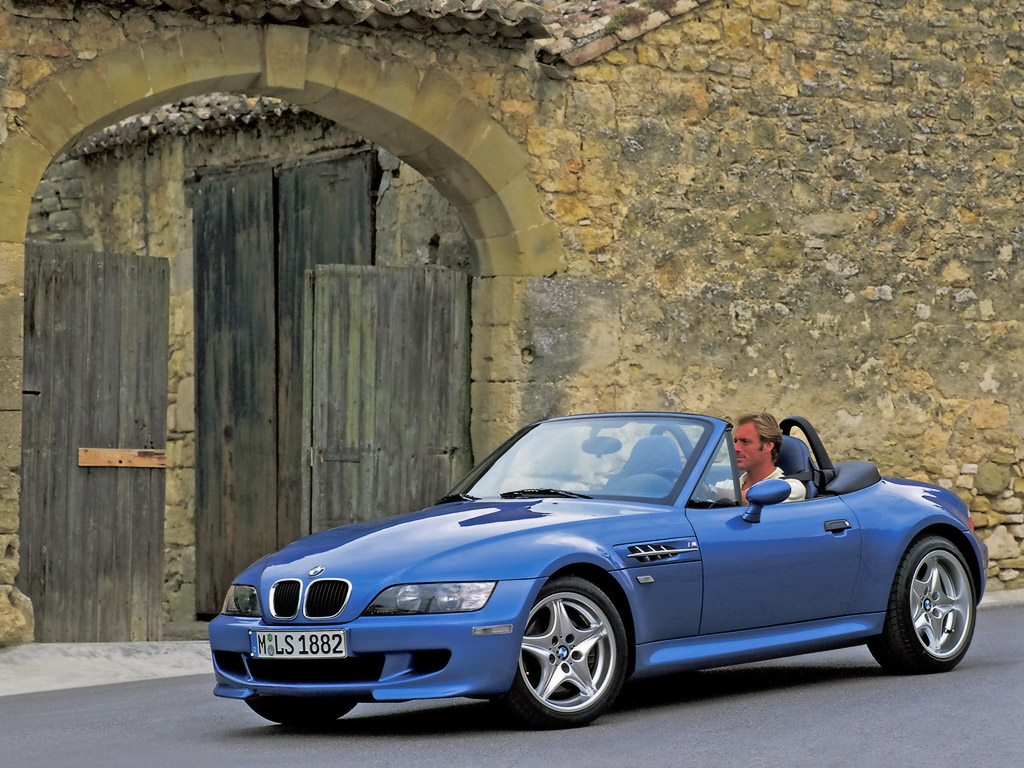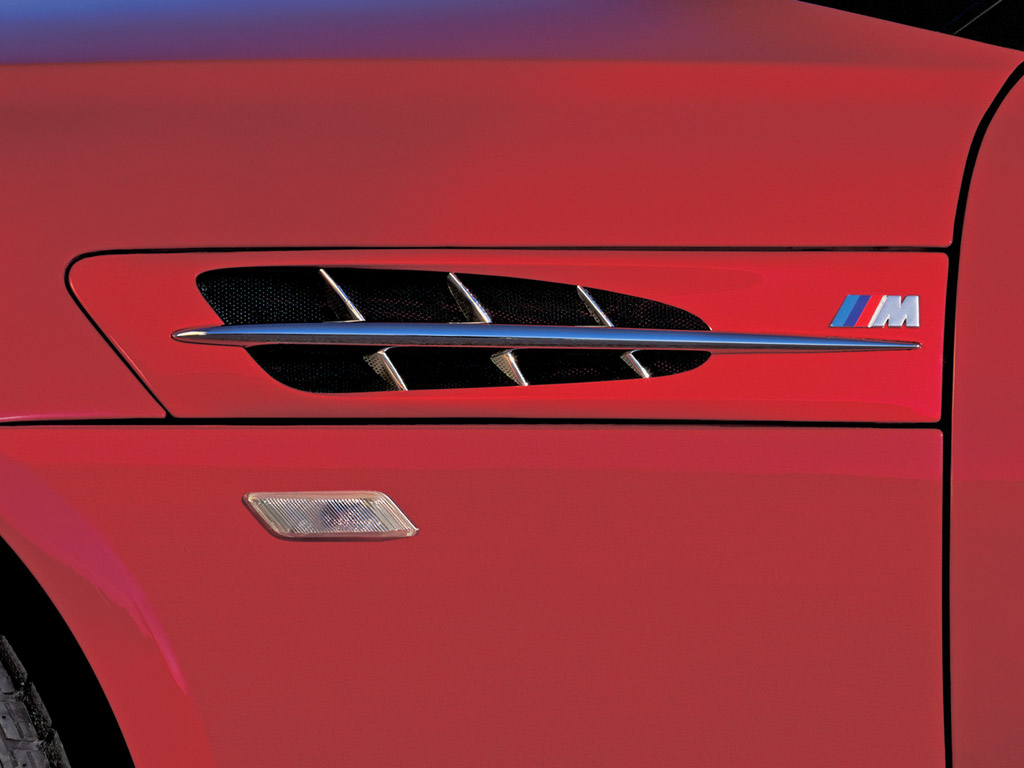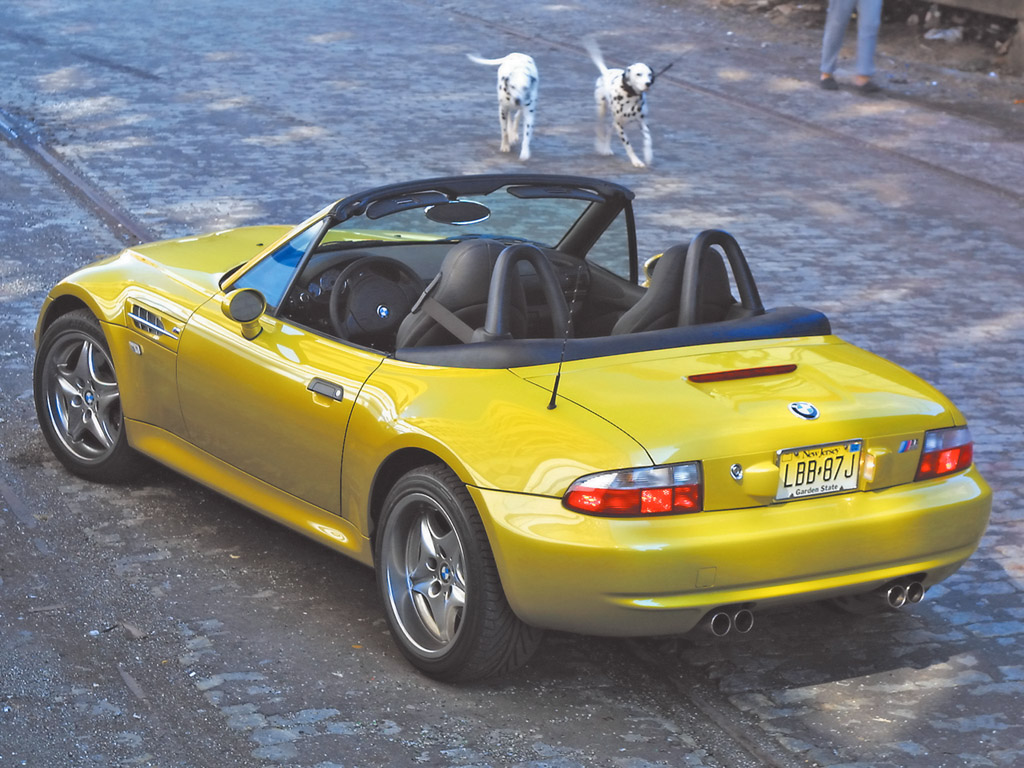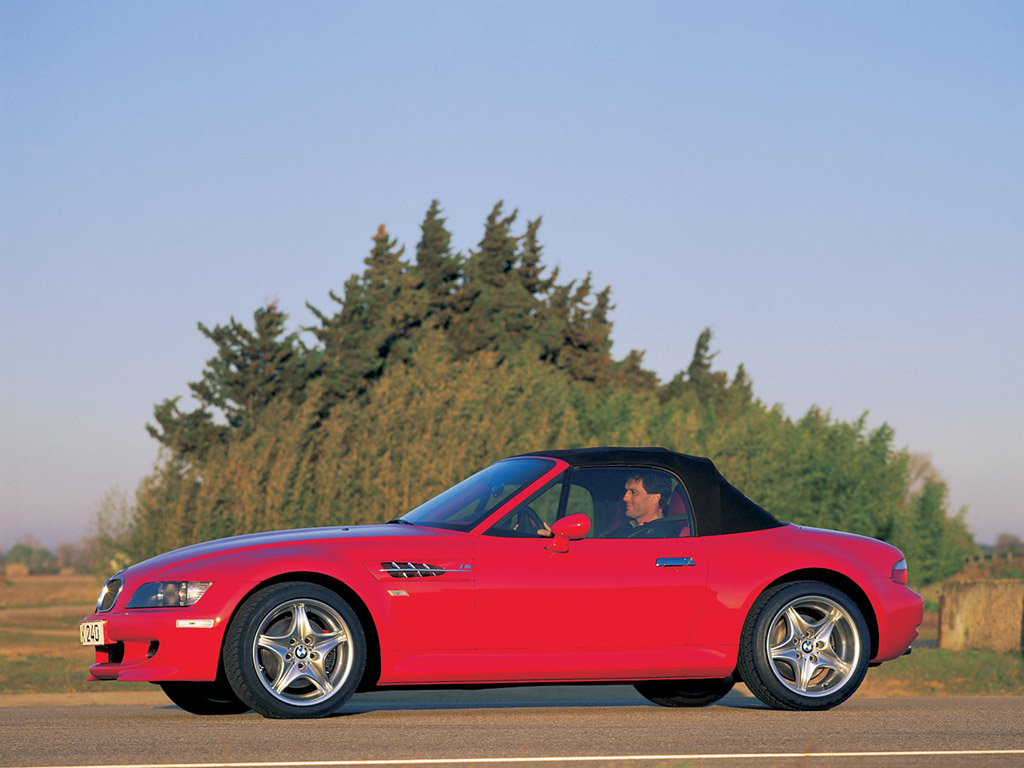BMW M Roadster
(from BMW Press Release, 2002) M Roadster and Coupe. Last year, these two “muscle twins” among BMW sports cars were treated to the biggest evolution since their debuts. Chief among their changes was an all new engine, shared with the also new M3 models and endowing the roadster and coupe with fully 75 horsepower more than the already robust 240 hp under their long hoods.
For 2002, the M roadster and coupe continue essentially unchanged from 2001, except that the formerly optional single-disc in-dash CD player has been made standard. Prices are unchanged at $46,635 for the roadster, $45,635 for the coupe, including destination charge.
These are BMW M’s huskiest, most elemental sports cars. Before 2001, they’d gained a sterling reputation as such. Yet with the dramatic new injection of power for ’01, the raves began all over again. “Make no mistake, the previous iteration of the M roadster was a quick pocket rocket,” wrote Motor Trend in October 2001. “But the real story to the ’01 M roadster clearly is its radical new S54 I-6 engine. And although a bold statement, we’ll go so far as to say it, as well as the 333-hp version in the new M3, is the best naturally aspirated six-cylinder we’ve ever tested. Clearly, BMW continues to back its claim of being the ultimate driving machine.”
BRIEF OVERVIEW OF THE 2002 MODELS
Although the M roadster and coupe’s previous engine was still earning raves in 2000, neither BMW nor BMW M rests on its laurels. To upgrade the M models’ performance further, BMW M created a brand-new engine, called the S54. It is essentially the same as that powering the M3 models, except that the roadster’s and coupe’s snug dimensions dictate a somewhat more restrictive exhaust system. The M roadster/coupe engine delivers 315 hp and 251 lb-ft. of torque – fully 75 hp and 15 lb-ft. more than the previous engine’s output. (The M3 engine version produces 333 hp and 262 lb-ft.)
In its broad concept, the new engine, designated the S54 1, shares the familiar basic architecture of other BMW inline 6-cylinder engines. Virtually all of its engineering details, however, are unique and oriented to the very highest level of performance.
Given that other current BMW “sixes” have an aluminum block with cast-iron cylinder liners, it may be surprising that the new M3 engine (like its predecessor) has a cast-iron block. Why?
Compactness is the primary reason. An inline six is longer than a V- 6, and BMW nurtures the inline layout for its superior smoothness and sound. An aluminum block’s cylinder liners take up space; with liners it would not have been possible to achieve the engine’s 3.2-liter displacement without lengthening the block.
The second reason is strength. Given that this engine develops nearly 100 hp per liter, its internal stresses are high. According to M3 Project Director Siegfried Friedmann, BMW engineers concluded that a cast-iron block could best sustain the engine’s high cylinder pressures and high piston speed at maximum rpm.
The block accommodates the engine’s increased bore and stroke of 87 x 91 mm, up from the previous U.S. engine’s 86.4 x 89.6 mm to give a displacement of 3246 cc, vs. 3152 before. Increased displacement, however, is not the major contributor to the huge power increase over the previous engine. More significant are the new induction, combustion and exhaust engineering, together with the unit’s high-rpm concept. In terms of actual hardware, the starring role here is played by a brand-new cylinder head that could be termed “exotic.”
Feature-by-feature, the new cylinder head (of aluminum as before) departs dramatically from the previous U.S. head, becoming more like those of other BMW M engines. Features shared with the M5’s V-8, for example, are noted with an asterisk (*):
Double VANOS steplessly variable valve timing*. The engine’s Double VANOS 2 steplessly varies valve timing on the intake and exhaust camshafts. Though this same basic VANOS system is employed in 3, Z3 and 5 Series 6-cylinder engines, as used in the S54 it varies timing over a wider range and contributes strongly to the engine’s high power output. Intake timing is varied by 60o, exhaust by 46 o, vs. 40 o /25 o 3 in the regular production engines. As always, VANOS is hydraulically actuated via electronic controls.
VANOS pressure pump*. VANOS has its own radial-piston oil pump; in regular-production BMW engines the main oil pump supplies the pressure for VANOS. This pump is part of the exhaust camshaft’s VANOS mechanism, and produces up to 120 bar (1740 lb./sq in.) of pressure. The high pressure enables the system to vary valve timing more quickly at very high rpm than would the standard system. Thus BMW M refers to the M3’s VANOS system as High-Pressure Double VANOS*.
Unique valve mechanism. Other BMW double-overhead-camshaft (DOHC) engines employ “bucket-type” hydraulic lifters, actuating the valves directly with minimum noise and no periodic adjustment. For the S54’s rpm potential, however, BMW M needed a valvetrain with less reciprocating mass.
To achieve this, the M engineers created a new actuating mechanism, using finger-type rocker arms. Pivoting on their own shafts (one on the intake side, one on the exhaust), these arms reach out to form the actuating surface between camshaft and valve. They weigh less than the bucket tappets, and as the entire arm does not move the distance of valve lift, its effective reciprocating mass is less than its actual mass. Altogether, the rocker arms’ effective mass is 30% less than that of the bucket tappets; in turn, this allows lighter valve springs, which also reduce inertia. All this helps the engine attain its 7600-rpm capability.
This mechanical system does require periodic inspection. Lead engine engineer It is unlikely that clearance will ever actually need adjustment, but if so it is done with shims (tiny metal discs of various thickness) without removing the camshafts. The rocker-arm arrangement also generates less friction.
Where the regular-production 6-cylinder engines have a simplex (single) primary chain driving the exhaust camshaft and a smaller secondary chain driving the intake camshaft from there, the S54 has a full duplex (double) chain driving both camshafts directly. As usual with BMW engines, the chain is hydraulically tensioned and needs no periodic adjustment or replacement.
Extra-high compression ratio*. At 11.5:1, the M engine has the highest ratio in current BMW production. (At 11.0:1, the M5 is second highest.)
Machined surfaces*. For smooth airflow the combustion chambers and intake ports are fully machined; the exhaust ports are partially machined. For durability, the valve seats are of especially hard steel. A 3-layer stainless steel head gasket ensures effective sealing of the head to the block.
Head casting and sealing. Extreme strength in the cylinder head is achieved by making it a single aluminum casting. Though more difficult to achieve than the previous European engine’s 2-piece head casting, this construction also saves a significant 29 lb. – at the top of the engine, helping lower the center of gravity.



